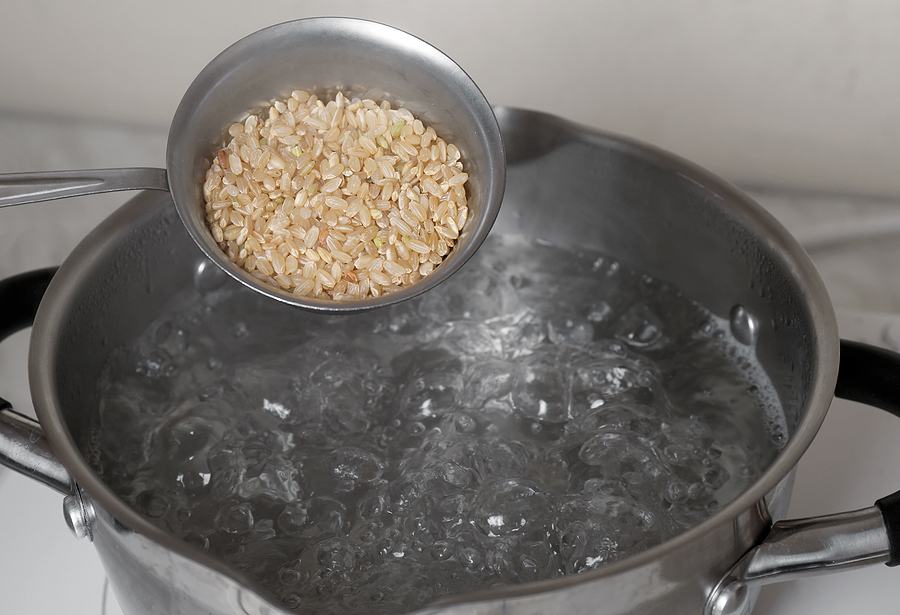March is National Nutrition Month® and a good reminder that Food Connects Us. Many lists of budget friendly tips remind us that brown rice is a nutritious, low-cost food. It’s worth taking a fresh look at this whole grain hero. Packed with nutrients, rich in flavor, and incredibly versatile, brown rice is a small change that brings big benefits. Whether you’re looking to boost your energy, improve digestion, or simply try something new, brown rice is the perfect addition to your kitchen. Let’s dive into everything you need to know about this wholesome grain and why it’s time to make the switch!
What Is Brown Rice?
Brown rice is simply rice that hasn’t had its outer layer, or bran, removed. This makes it a whole grain, which means it’s packed with more nutrients compared to white rice. It has a chewy texture and a nutty flavor that makes it delicious in all kinds of meals.
The bran layer contains fiber, which aids digestion and keeps you full longer. Brown rice also provides essential minerals like magnesium, potassium, and iron, along with key B vitamins (B1, B3, B6, and B9) that support overall health. While white rice also contains these nutrients, brown rice has a higher
amount.
Fun Facts
- Brown rice comes in different varieties, like short-grain, medium-grain, and long-grain.
- It takes longer to cook than white rice because of the outer bran layer.
- Rice was a major crop in Georgia during the Revolutionary War. Today, there is only one active rice farm in the Savannah River Delta.
- Brown rice has been eaten for thousands of years and is a staple food in many cultures.
Cooking Brown Rice is Easy (…plus shortcuts!)

- Rinse 1 cup of brown rice under running cold water in a fine mesh strainer until the water runs clear.
- Bring 2 cups of water to a boil in a pot.
- Add the rinsed brown rice and return to a brief boil. Then reduce the heat to low, cover, and simmer for 40-45 minutes.
- Turn off the heat and let the rice sit for 10 minutes before fluffing it with a fork.
Keep your brown rice fresh
Because brown rice contains natural oils, it has a shorter shelf life than white rice—about 6 months at room temperature, 1 year in the fridge, or up to 2 years if frozen. Here’s how to check that your brown rice is fresh:
- Smell: Fresh brown rice has a mild, nutty aroma
- Appearance: Look for discoloration, mold, or an unusual powdery coating.
- Texture: If the rice feels oily or sticky when dry, the natural oils in the bran layer have likely gone bad.
10 Ways to Use Brown Rice

1. Stir-fry: Use brown rice as a base for veggies, meat, or tofu.
2. Buddha bowl: Top with beans, avocado, roasted veggies, and a drizzle of your favorite sauce.
3. Breakfast bowl: Combine leftover cooked brown rice with fruit, nuts, and honey similar to oatmeal for a twist on a healthy morning meal.
4. Rice salad: Mix with chopped veggies, bean/meat/or tofu, herbs, and vinaigrette.
5. Fried brown rice: Turn leftover brown rice into a quick meal with scrambled eggs and soy sauce. Here is an easy recipe to inspire you.
6. Soup: Add cooked brown rice to soups for extra heartiness. Our hearty Gumbo Soup, which uses one of the shortcuts, is a great place to start!
7. Rice pudding: Make a sweet dessert with milk, sugar, and cinnamon.
8. Casseroles: Add it to baked dishes for a wholesome ingredient.
9. Stuffed peppers: Fill bell peppers with a mix of brown rice, beans or ground meat, and cheese. Make up your own recipe or use ours.
10. Sushi rolls: Use short-grain brown rice for homemade sushi.
Published March 24, 2025
Laurel Sanville, MS, RDN, LD | Edited by Jung Sun Lee, PhD, RDN; Edda Cotto-Rivera; and the nutrition education team